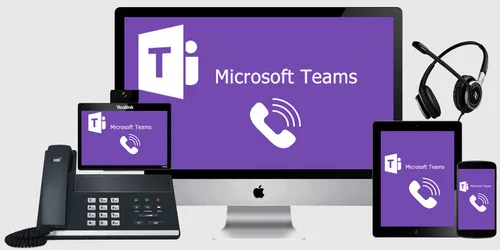
Knowledge base
August 07, 2021
What is direct routing for Microsoft Teams?
Unless you’ve been vacationing on the dark side of the moon for the past few years, you’ll no doubt be aware of Microsoft Teams’ staggering success in the ultra-competitive unified communications arena.
But there are two words that often come up when IT departments start talking about Teams adoption: “direct” and “routing.” So what exactly is Direct Routing for Microsoft Teams? More importantly, why bother?
Calling is cheap (or should be)
As the events of the past year have shown, the fact that many organizations are moving to a hybrid work model, the ability to call and join online meetings from anywhere is vital to maintaining productivity and ensuring lasting performance. business success. And coincidentally, one of the best things about Teams is its voice communication capabilities.
Using the Teams platform, you can make, receive, and transfer calls in Teams to and from landlines and mobile phones on the public switched telephone network (PSTN), either through Microsoft’s phone system and calling plans, or through your own carrier with Direct Routing for Teams.
However, if you still have a contract with your current carrier, switching to Microsoft’s phone system and calling plans could result in a fine. Not only that, your existing calling plans and line charges can be cheaper than a Microsoft calling plan.
This is exactly where Direct Routing comes in.
Get the best of both worlds
Direct Routing for Microsoft Teams gives you the best of both worlds by allowing you to take advantage of all the benefits of Teams while staying with your current provider for your lines and minutes. Essentially, Direct Routing allows a session border controller (SBC) to mediate between your on-premises PSTN or SIP trunk and the Microsoft Teams service.
Enabled on a physical or virtual SBC and either on-premises or in a data center/cloud, direct routing works on the same principle as an SBC connecting one SIP communications entity to another SIP entity with a different flavor of the SIP protocol.
When an incoming call is received, the SBC mediates a session from the provider and transforms it to meet the tastes and requirements of Microsoft Teams. It is then passed to the Microsoft Teams client and to the intended user. Similarly, an outgoing call is routed to the SBC and then to the recipient through the existing PSTN or SIP trunk.
One of the best things about this solution is that it is completely scalable, from just a few users to tens of thousands. It lowers the total cost of ownership by giving you lower call costs and gives you full control over your communications solution. For example, you can connect additional communication systems in parallel via the same SBC.
Source: audio codes
Want to know more?

Related
blogs
Tech Updates: Microsoft 365, Azure, Cybersecurity & AI – Weekly in Your Mailbox.









